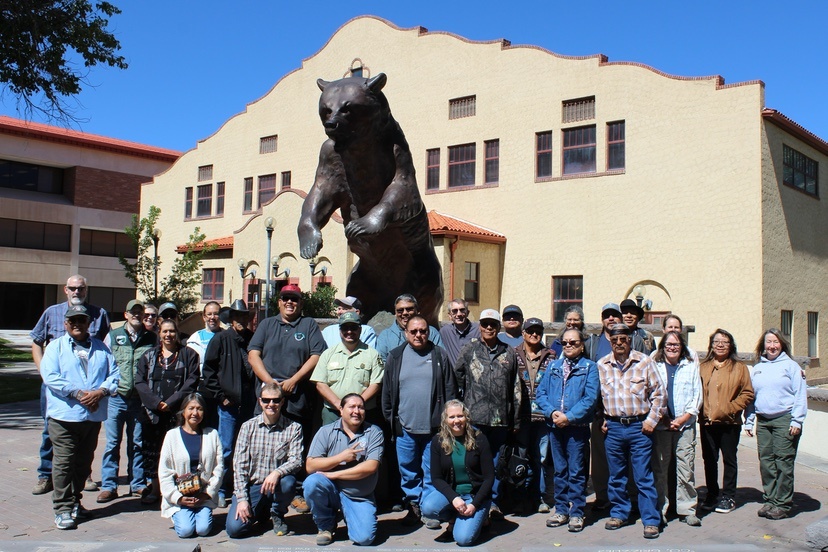Photo: NAGPRA meeting attendees at Adams State University
The Rio Grande National Forest jointly organized and hosted a well-attended meeting in September with numerous Native American Tribes. Working with the San Luis Valley Field Office BLM, Great Sand Dunes National Park and Preserve, and the San Luis Valley National Wildlife Refuge Complex, the purpose of this event was to review, update and re-commit to a locally special agreement aimed at enhancing the intent of the Native American Graves Protection and Repatriation Act (NAGPRA).
The tribes attending the meeting include the Jicarilla Apache Nation, Northern Arapaho Tribe, Pueblo of Acoma, Pueblo de San Ildefonso, Pueblo of Nambe, Pueblo of Santa Clara, Pueblo of Tesuque, Pueblo of Zia, Pueblo of Zuni, Southern Ute Indian Tribe, and the Ute Mountain Ute Tribe.
The meeting took place September 17-19 at Adams State College in Alamosa, CO and included several field site visits. The federal agencies have signed onto a Memorandum of Understanding with numerous tribes that outlines specific actions that will be taken when human remains and other associated cultural items, that could potentially be Native American, are discovered on public lands. The memorandum specifies the process that federal agencies will take under those circumstances.
The meeting is an outstanding example of government-to-government tribal consultation, and this local memorandum bolsters the effectiveness of the act while enhancing the agencies’ commitment to tribal sovereignty and their unique cultural needs.
Some of the actions that were addressed at the meeting include a summary of revisions to the 2022 Memorandum of Understanding; a discussion of recent changes to NAGPRA rules, including new deadlines, lists of associated funerary items and objects, and tighter procedures; as well as how tribes want agencies to coordinate these new changes.
Three notable results of the meeting were:
- Additional tribes committed to the Memorandum of Understanding
- Enhanced our government-to-government trust responsibilities with federally recognized tribes
- Numerous personal connections were made with federal agency personnel and tribal leadership
A healthy discussion about communicating tribal knowledge and culture was a key element of the second day. Tribal representatives expressed their desire to allow them to tell their own stories and reminded agency representatives that the tribal stories are as much about current issues as they are historical.
The local NAGPRA meeting showcases how the four federal agencies and Native American Tribes have been working in close collaboration over the last 18 years. The Memorandum of Understanding is nationally recognized and is being used an example to guide similar activities in areas across the nation.

